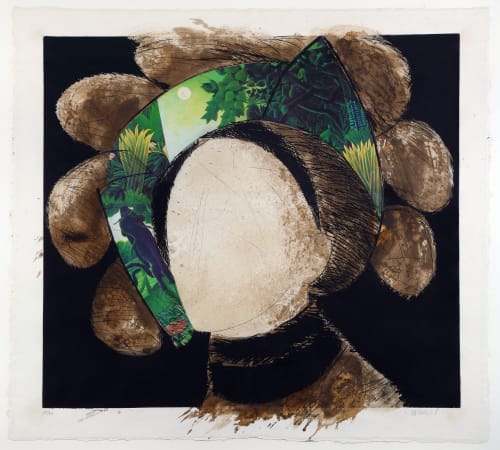The Spanish artist Manolo Valdés is known for his large bronzes and oil paintings. He was born in Valencia in 1942. At the age of 15, he attended the “Escuela de Bellas Artes de San Carlos” in Valencia to found the artist group “Equipo Crónica” together with Joan Toledo and Rafael Solbes in 1964. With the death of Solbes in 1981, the artists’ group dissolved and Valdés began to develop his own unmistakable style.
Valdés is one of the few great artists who shines in all disciplines, in drawing, painting, printmaking and sculpture. Not only does he masters these disciplines and is technically versed in them, he is also original in all of them: he manages to work with each technique according to its own specific characteristics and to realize his artistic idea in it.
Valdés art is inspired by his Spanish origin. Motifs and forms from paintings by Francisco Goya, Jusepe de Ribera, Francisco de Zurbarán and in particular Diego Velàzquez can be found again and again in his oeuvre. He takes up motifs from the history of art, isolates them from their original context and then reinterprets them in a new and unexpected way. Thus, the “Infanta Maria Teresa”, who Velàzquez painted several times, with her sweeping skirts and voluminous hairstyle, can be found in some of Valdés’ sculptures.
In the early 1980s, the artist found his way to printmaking, and in these years he began to experiment with etching. Towards the end of the 1980s, he further developed his etchings and gave them a stronger individuality through inserted collages. At second glance, his prints make the viewer think. In his work “Pamela”, for example, he combines a painting by Ernst Ludwig Kirchner with collages by Henri Matisse and Vincent van Gogh.
Since 1990 the artist lives and workes in New York and Valencia. His works can be found in private and public collections such as the Met Museum or the MoMA in New York.
